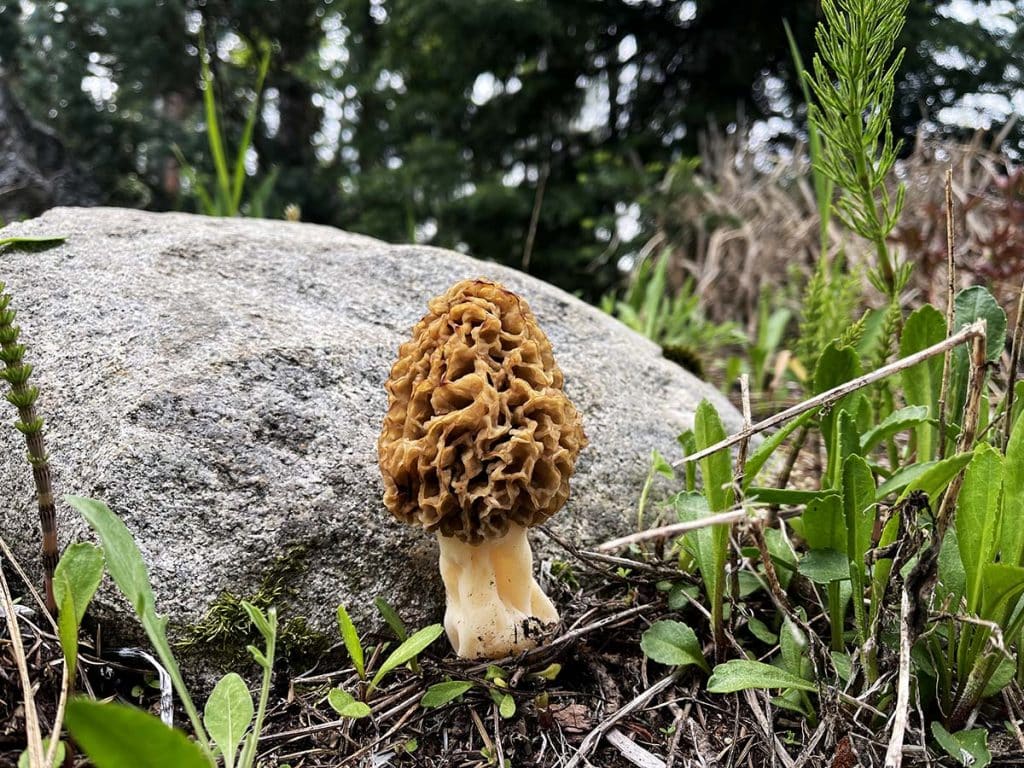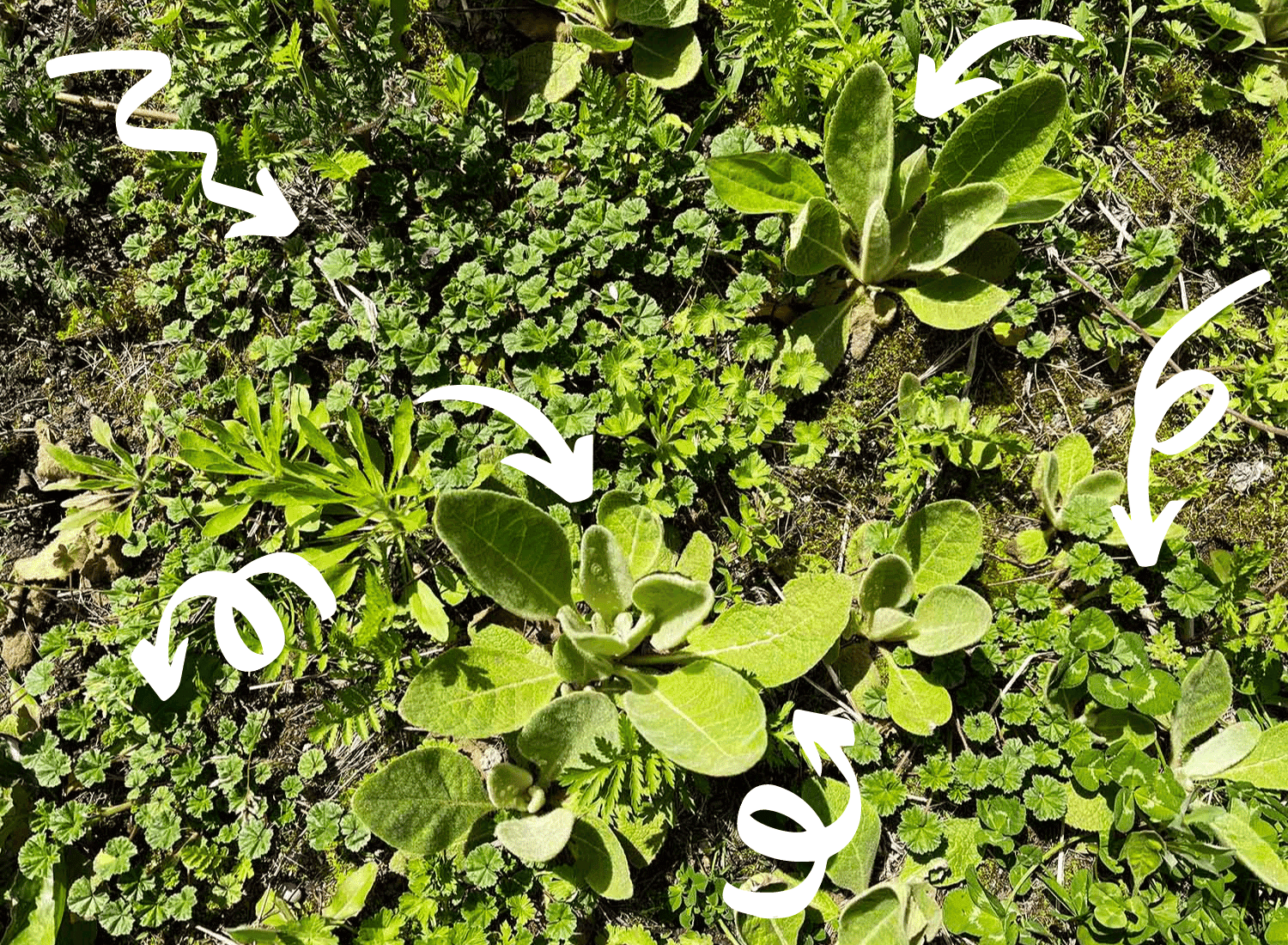The first weeding job of the year preparing my vegetable garden for planting is always the most intimidating. It’s easy to maintain throughout the growing season, but preparing the beds for planting is time consuming and tedious.
A great way to transform the tedium into something engaging and even (dare I say it?) FUN — is to pay attention to the weeds you’re pulling. So many of what we refer to as “weeds” are actually useful plants growing in an inconvenient place. Learn what you’ve got and what you can do with them, and the task of weeding transforms into a treasure hunt to replenish dwindling herb jars!
Taraxacum officinale
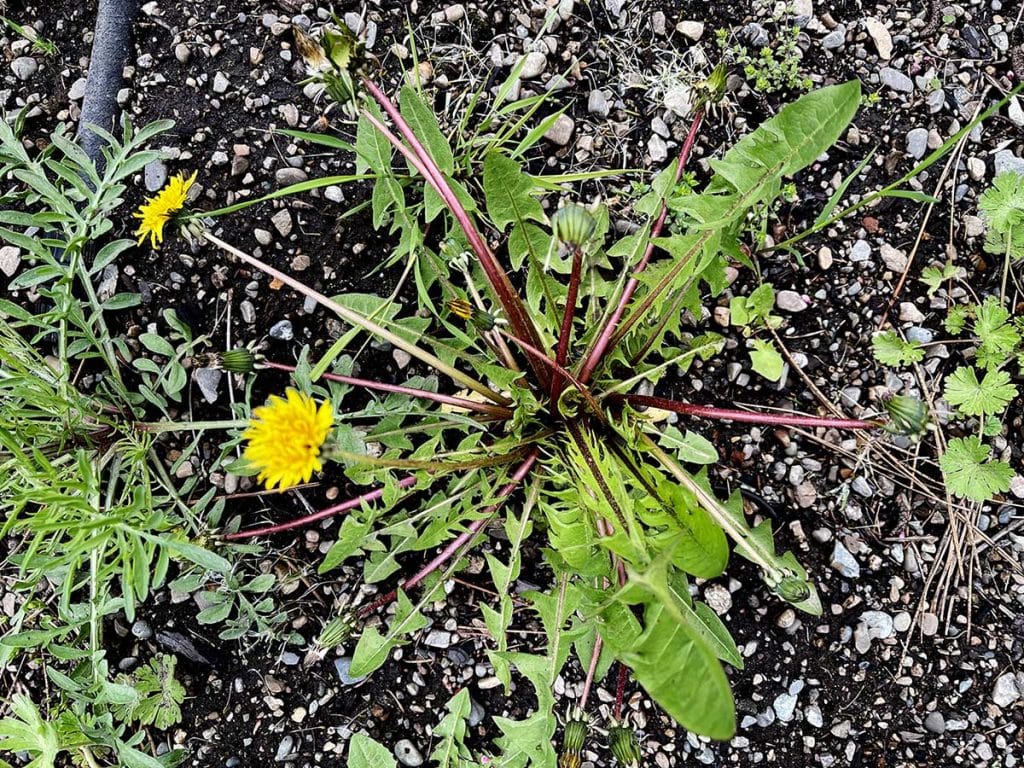
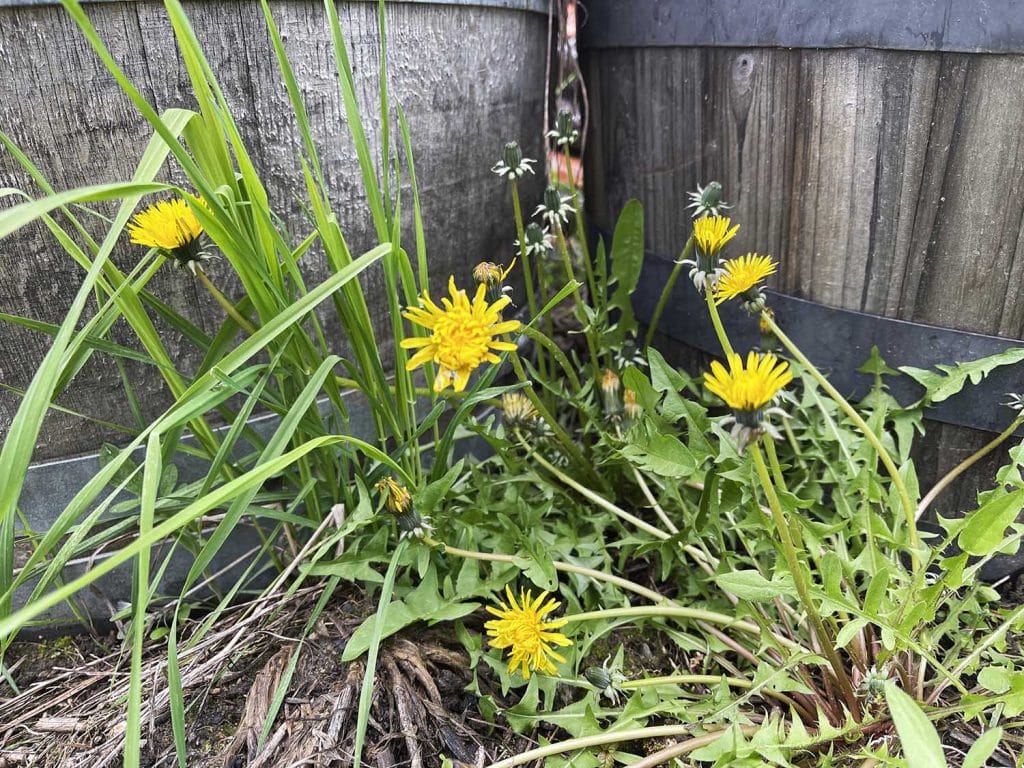
Just about everyone will recognize dandelion (Taraxacum officinale) as a common lawn weed that’s also fond of growing out of sidewalk cracks and pretty much anywhere it can get a foothold. Like Oregon grape, dandelion is a great bitter herb that can be used to make digestive bitters. The roots can be roasted to make an excellent coffee substitute and the young leaves are great tossed fresh onto a salad in place of arugula.
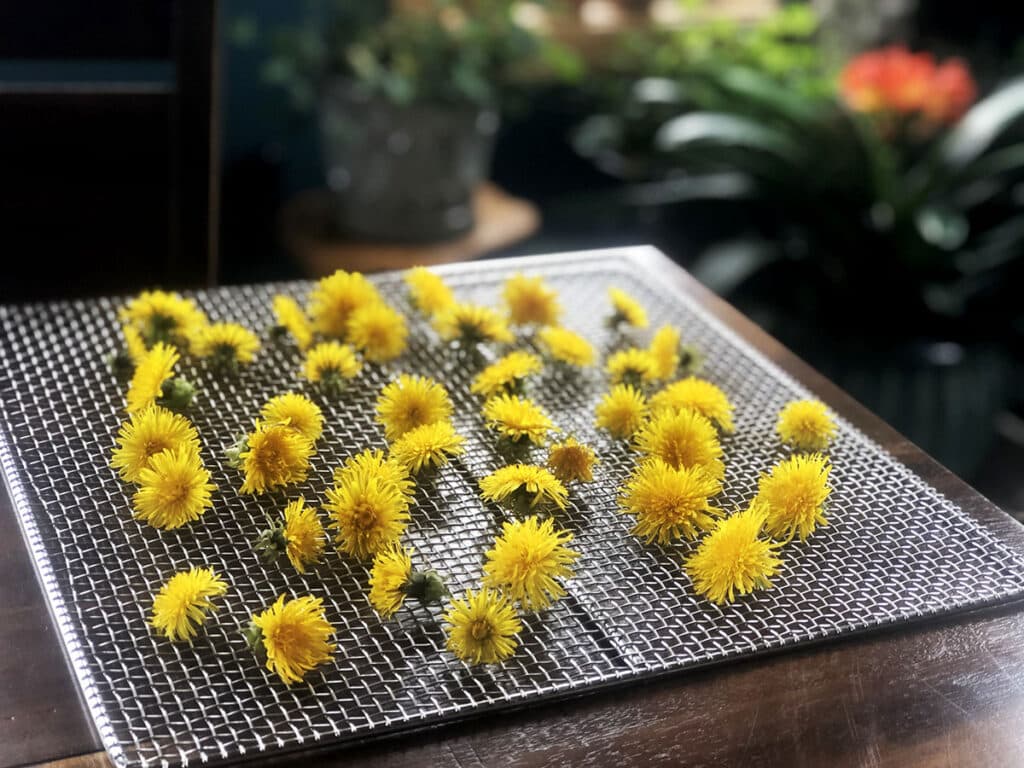
Achillea millefolium
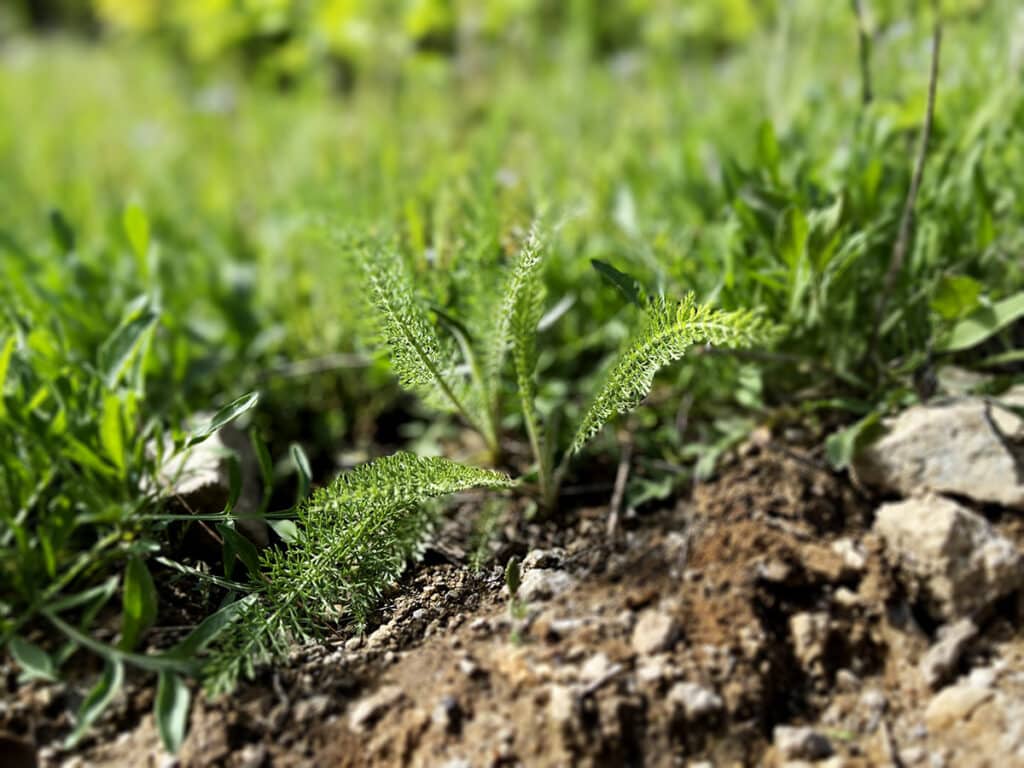
Yarrow (Achillea millefolium) is yet another bitter herb that can be added to your homemade digestive bitters. Its feathery leaves are also a great plant for your herbal first aid kit. Yarrow’s astringent tannins help to tone and heal minor wounds and the leaves make an excellent styptic thanks to their constituent achilleine, a hemostatic (blood-clotting) alkaloid.
The leaves can also be bruised and rubbed on the skin as a makeshift insect repellant in a pinch!
Matricaria discoidea
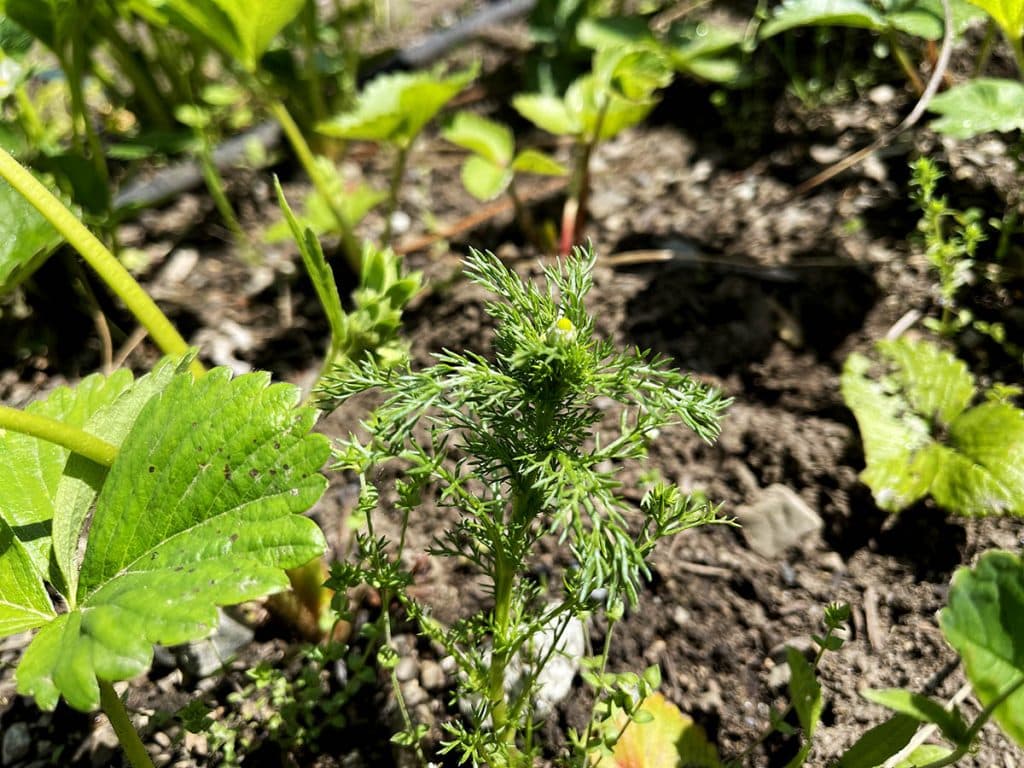
Pineapple weed, aka wild chamomile (Matricaria discoidea) gives off a pineapple scent when bruised or stepped upon. The buds, stems and leaves are tasty in a salad and the flower heads make a delicious, tropical flavored tea.
Pineapple weed making itself comfy in the strawberry patch:
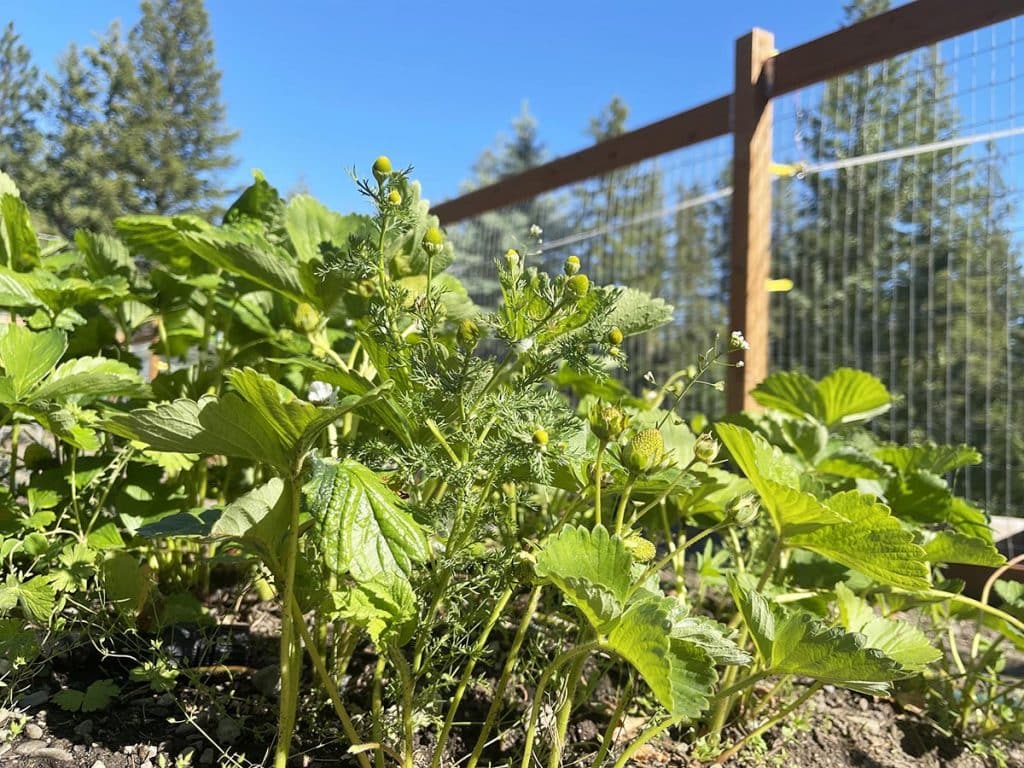
Tanacetum vulgare
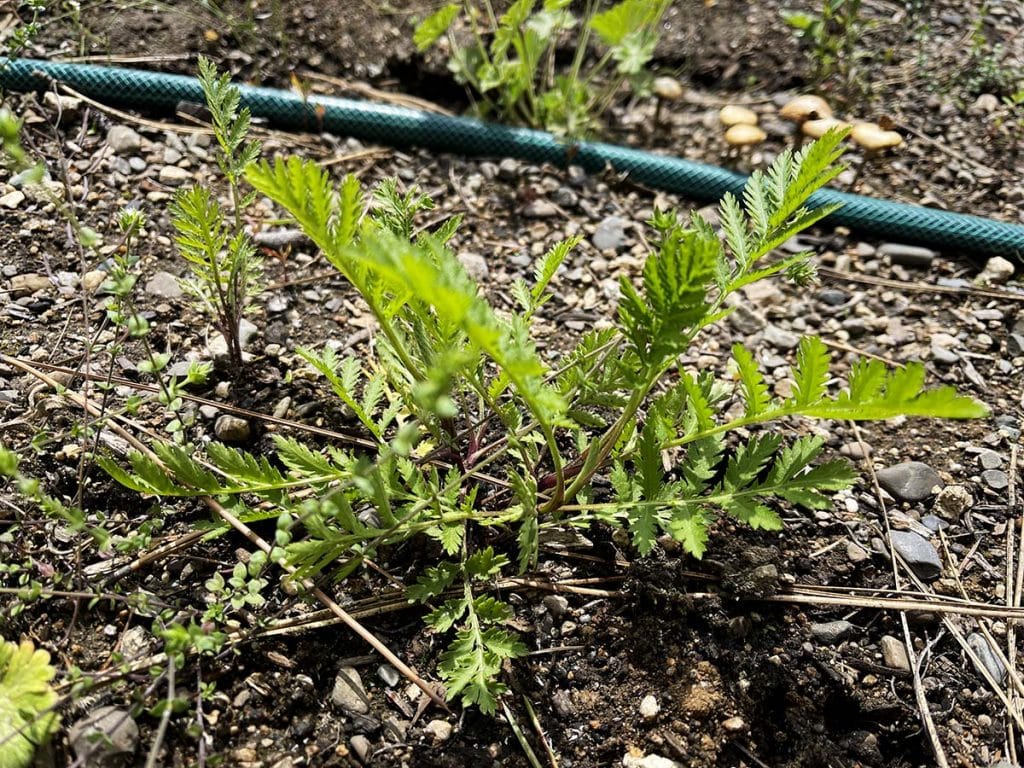
Common tansy (Tanacetum vulgare) is generally not a plant to be eaten or used internally, but it does make an effective herbal insect repellant. Combine it with yarrow and maybe some lemon or orange peels and throw it all in the blender with some witch hazel, strain and voila: homemade insect repellant (that works!)
Equisetum arvense
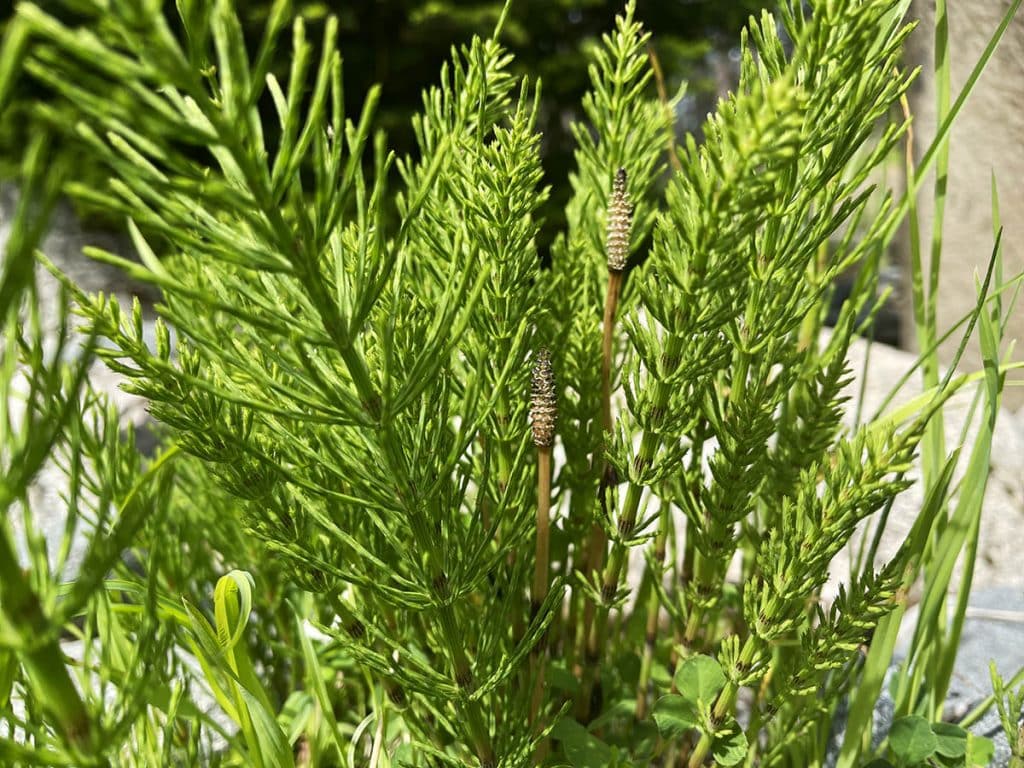
Horsetail (Equisetum arvense) is a prehistoric looking plant that is one of nature’s best sources of the mineral silica, which can be up to 25% of the dry plant material. Horsetail is a nice addition to a high-mineral tea blend along with other mineral-rich herbs such as dandelion, nettle and red clover. Horsetail may be helpful to those with thinning hair or dry brittle nails. It also makes a nourishing hair rinse to use post shampooing/conditioning!
Chenopodium album
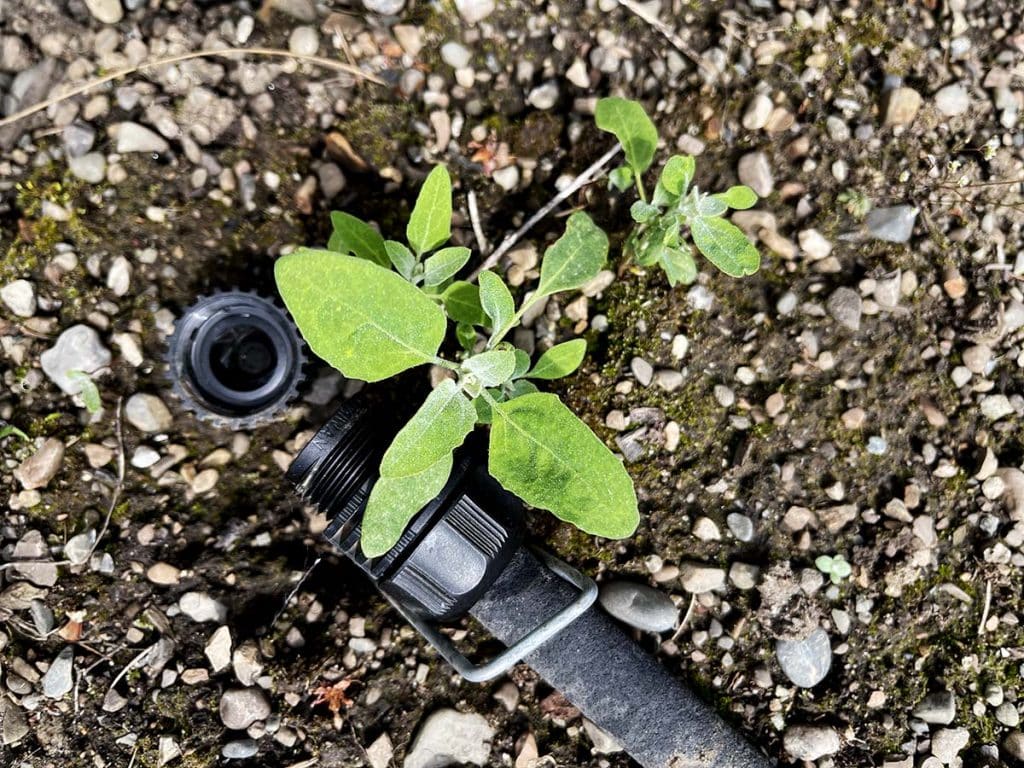
Lamb’s quarters aka wild spinach (Chenopodium album) is a fun forage to add to a spring/summer salad or pretty much any recipe where you’d normally use spinach. Lamb’s quarters are easily identified by their distinctive “goosefoot” shaped leaves that are dusted with white powder. Like spinach, lamb’s quarters are rich in calcium and vitamins C, A and K1.
Also like spinach, lamb’s quarters contain oxalates that can interfere with your body’s ability to absorb calcium and other nutrients. Too many is not a good thing for anyone prone to gout or kidney stones, but the same can be said for spinach. It’s worth noting that the oxalates are balanced by lamb’s quarters’ high calcium content, which binds to oxalates and renders them unabsorbable.
Rumex acetosella
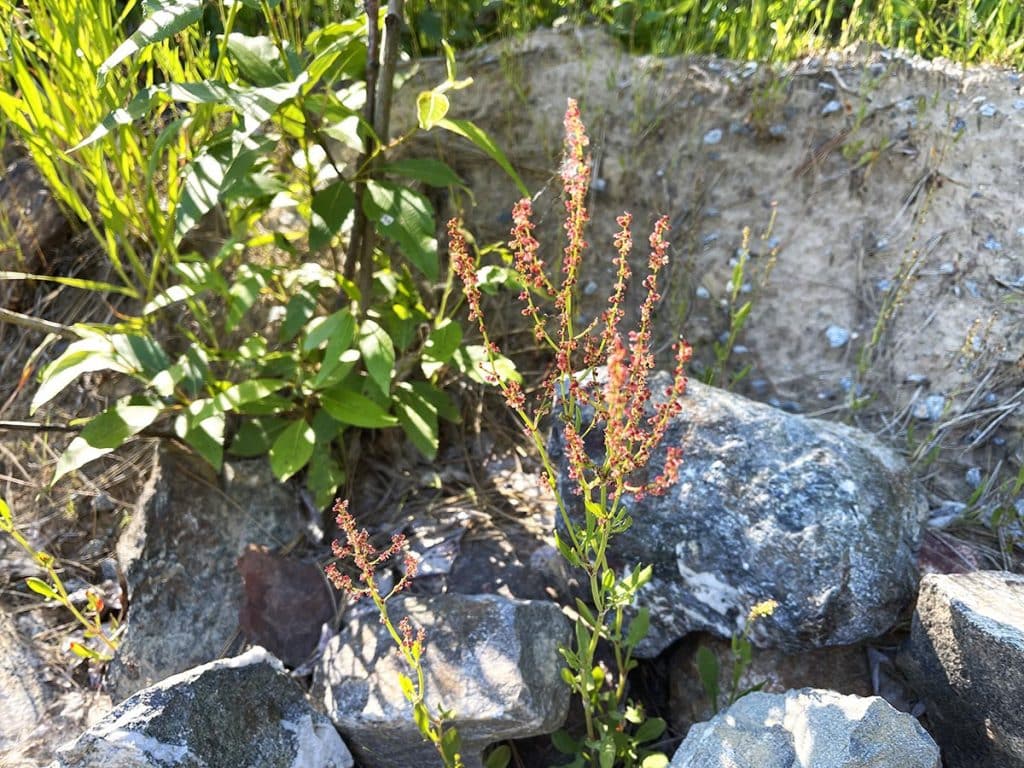
Sheep sorrel (Rumex acetosella), sometimes simply known as ‘dock’, is a tangy treat to find growing around your garden. A member of the buckwheat family, sorrel has been used for hundreds of years in the culinary world. Young leaves are used to brighten up salads, soups and sauces or add a tart-tasting garnish to any number of dishes.
Sheep sorrel contains high amounts of vitamins C and A and has been used to treat scurvy, inflammation and even diarrhea. Like lamb’s quarters, sheep sorrel is another herb high in oxalates, so use caution in cases of gout or kidney stones.
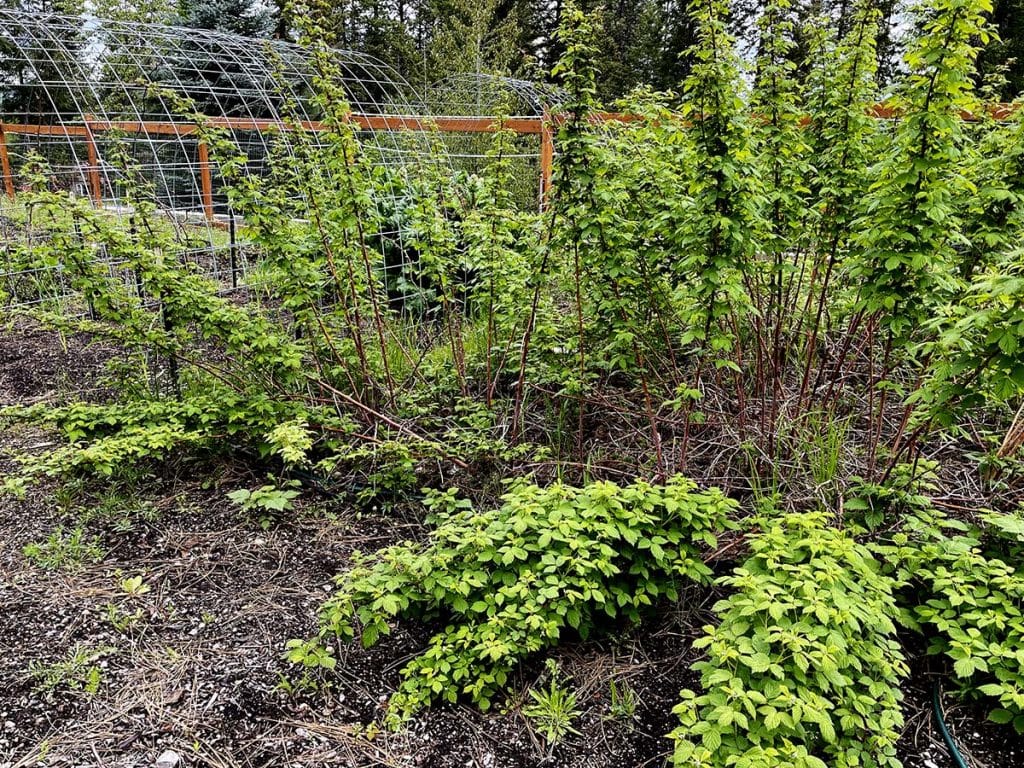
I didn’t find any today, but most years I have gobs of cleavers happily living under the shade of the raspberry patch. Sometimes I get lucky and find chickweed in there too.
(Yes, I know these raspberries desperately need to be staked!)
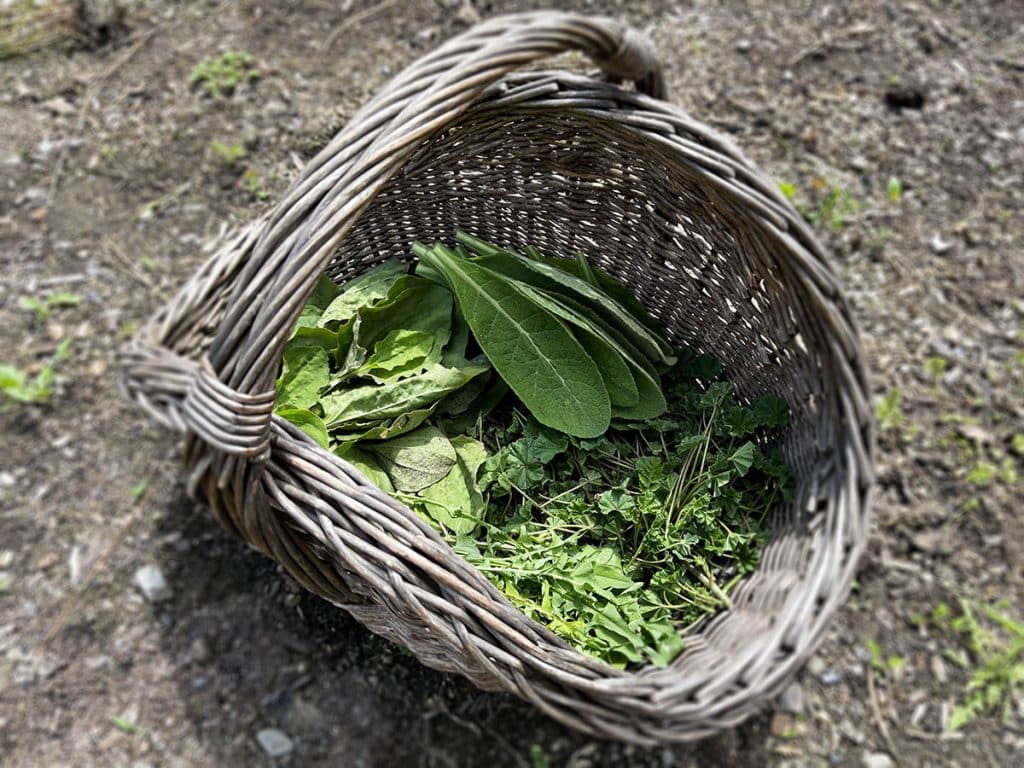
The Garden of Weed’n must be weeded one way or the other, so why not turn it into a game of ‘Where’s Waldo’ and come away with a few treasures! You never know what you might find! ♥
